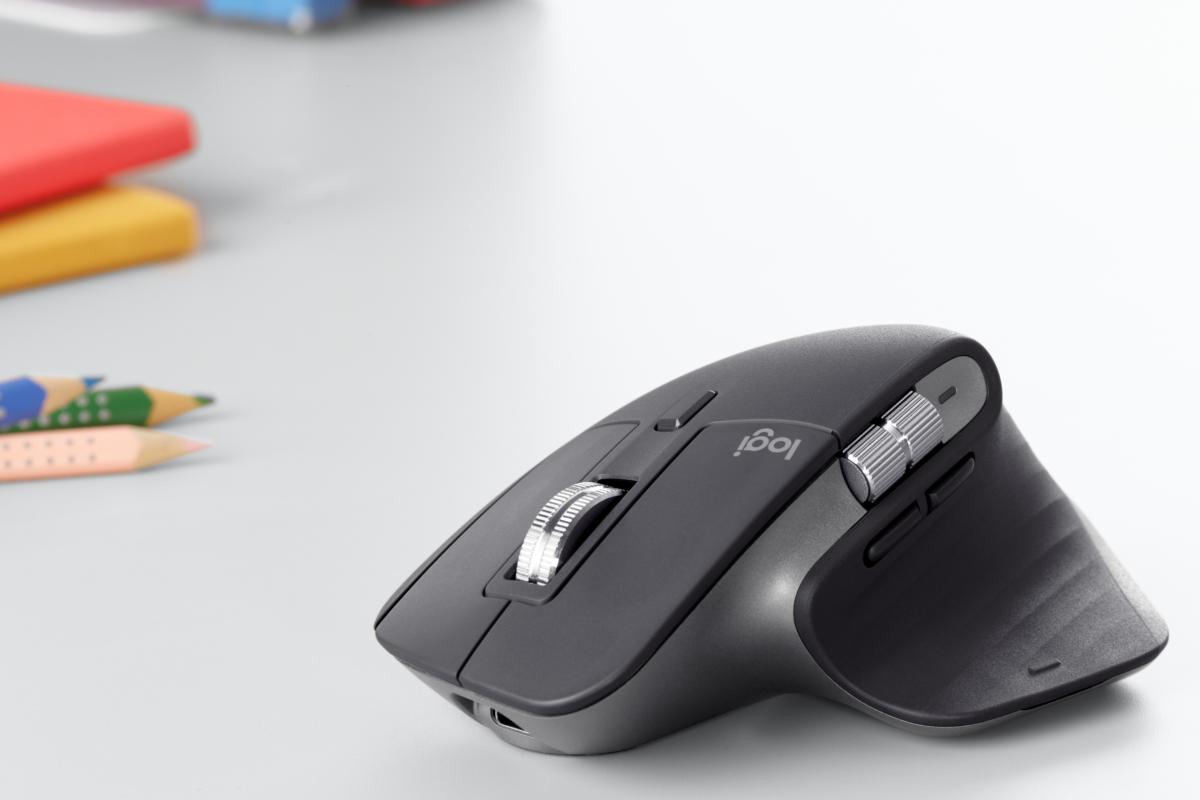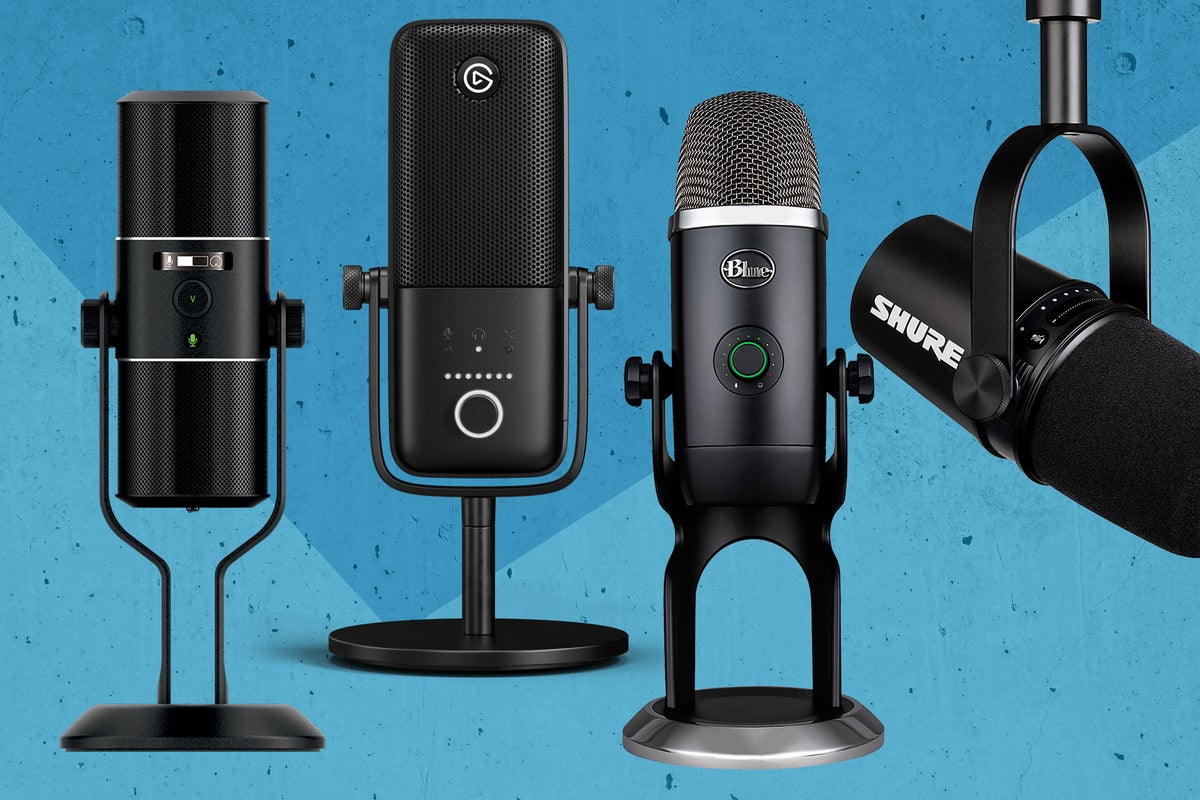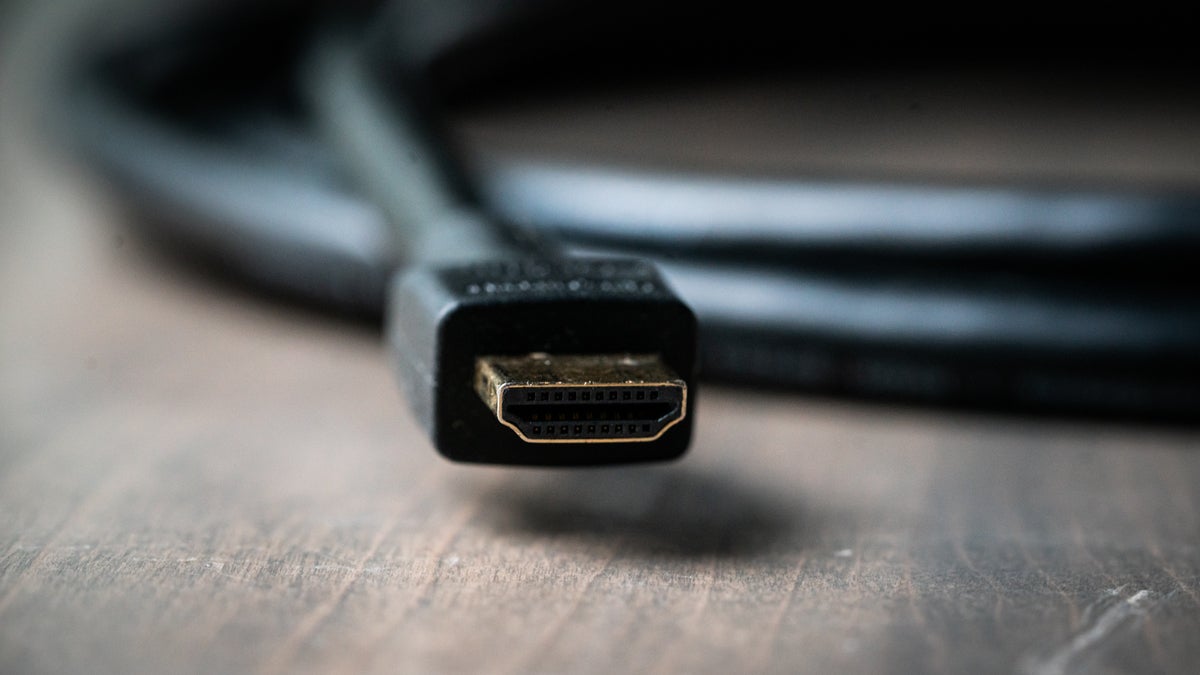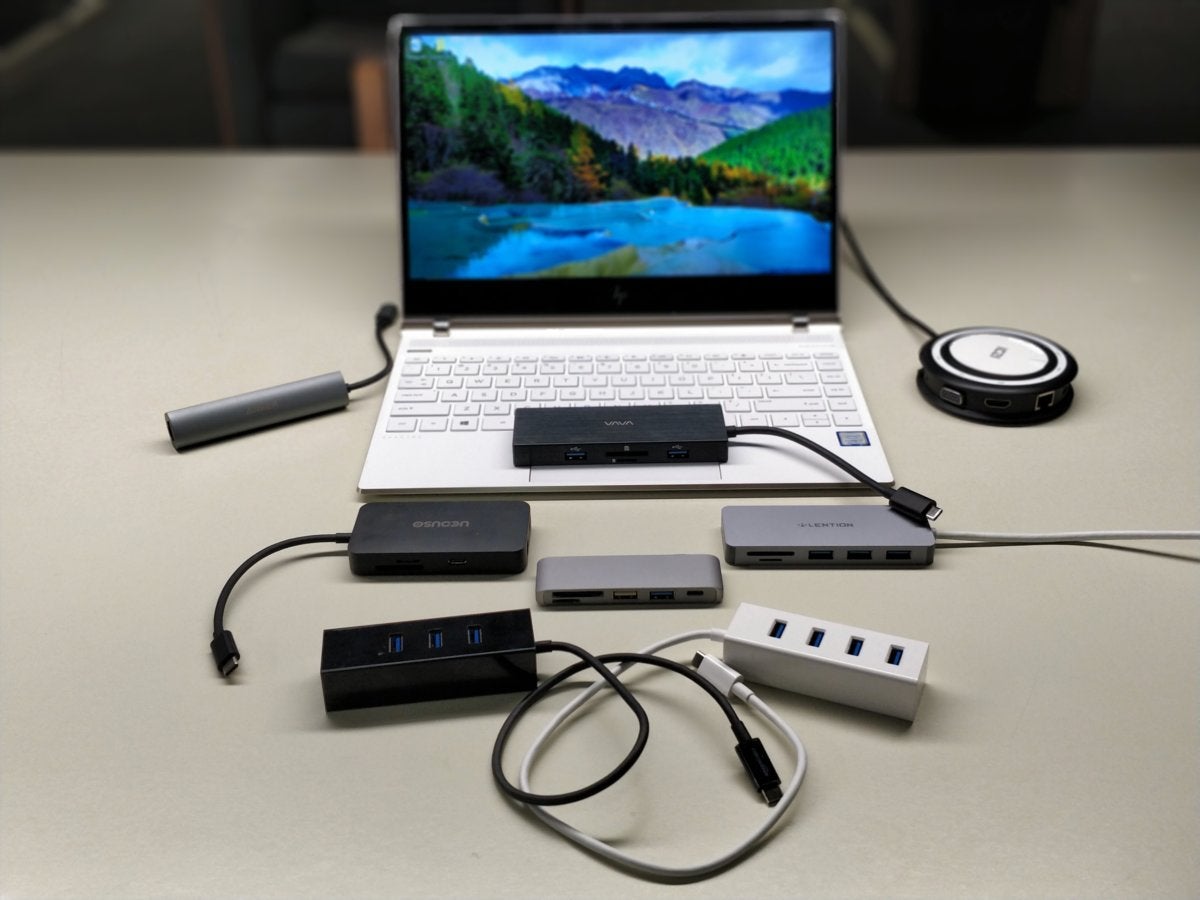Can You Use a Laptop as a Keyboard for a Desktop

Razer
The large deviation between laptops and desktops is that the latter are, well, big: ideally placed on a squeamish comfy desk and festooned with accessories. Merely if you take a laptop already, y'all have all the components of a desktop, and so some. If you're not going anywhere for a while, why not boot back and get the total desktop feel?
Here'southward why: you probably don't take all the stuff you need for a full desktop setup. But getting that stuff is relatively piece of cake, and then is assembling it in such a way that getting your laptop in and out is a cinch. That way you go the best of both worlds: a total, comfortable desktop setup when y'all desire it, and an on-the-go laptop when you demand it. This guide explains everything you demand to know to turn your laptop into a desktop workstation.
The proficient stuff: desktop components
The big advantage to building this setup is that y'all go to utilize your laptop with awesome, easy-to-use desktop components. (Oh, and you'll besides demand a desk-bound or a table, and a chair, obviously.) You can employ as many or equally few of these equally you like, merely here are the big ones:
Monitor: a larger external screen to give your eyes a rest and make movies and games really pop. You lot can use your laptop's screen and an external monitor at the same time, or if your hardware supports it, multiple monitors for a total "battlestation."
- A classic no-frills budget monitor—24-inch, 1080p brandish by HP for $125.
 Logitech
Logitech Mouse: Most laptop users are an ace at a trackpad, merely even the best of them will agree that a mouse is the way to go. Get a USB model if you want speed, or Bluetooth if y'all want a connectedness that won't take up a USB port.
- The best productivity mouse—Logitech's MX Master 3 for $100.
Keyboard: A lot of users only stick with their laptop keyboard while using it at a desk-bound station. But if you find yours peculiarly uncomfortable, or if you want to go into the growing mechanical keyboard scene, consider adding on a wired or wireless keyboard.
- The best wireless keyboard—Logitech K800 Illuminated for $60.
Speakers: Again, the speakers in your laptop volition remain functional while you work at a desk, but for bigger, bolder audio, get a set up of dedicated speakers. (Or if you prefer, a nice headset or a pair of true wireless earbuds.)
- The best estimator speakers nether $100—Creative Pebble for $20.
 Rob Schultz / IDG
Rob Schultz / IDG Other peripherals: Here's where everything else goes. Mayhap you want to add on a high-quality external webcam and microphone for meetings, or connect a game controller or an external difficult bulldoze. Peradventure you lot desire a hardwired network connection, a DVD drive, or a card reader for your digital photographic camera. Yous tin use almost any external accessory made for a desktop PC with a laptop, then long every bit you can find a way to connect it.
Keep your laptop awake with the lid closed
Note that it's possible to close the hat on your laptop, keep it running, and have it connected to an external monitor, keyboard, and mouse. You'll want to adjust your power settings so that the laptop "does nothing" when the hat closes in order to enable this. In Windows ten, this is in the Power Options of the Settings menu, nether the "Choose what closing the lid does" link on the side. (Offset button > Settings > System > Ability & Sleep.)
Basic connectivity needs
How easy or hard information technology is to aggrandize your basic setup without any actress hardware will depend on what kind of ports your laptop has, and how many. If y'all have a ten-pound Dell with every port under the sun, odds are pretty good you won't need anything to connect all those components upwards. If you're rocking a 2022 MacBook with just one USB-C port after you plug it in, well, it's going to become tricky pretty fast.
Let's break this down into connectedness types, shall we?
Video connections
Most laptops take a maximum of one video connectedness. HDMI is the most popular at the moment, considering merely nearly every monitor (and television set) fabricated in the last ten years will have that port. All you need is an HDMI cable, and you're good to go.
 Adam Patrick Murray / IDG
Adam Patrick Murray / IDG A straight HDMI cable is the fastest and easiest way to connect a monitor to a laptop.
If your laptop is rocking something a little more esoteric, like the Mini-DisplayPort on older models of the Surface or the VGA port nonetheless seen on some workstation machines, things might get a picayune more difficult. But y'all're still looking at just an adapter cable: check what you have on your laptop, what you have on your monitor, and get a cable that works with both, like this VGA-to-HDMI number.
If you want to connect your laptop to multiple monitors, things become more complicated. USB-C has made this a lot easier: see the sections further downwardly for more technical info. If your laptop doesn't have USB-C, you'll need to rely on a special adapter that can send video over a USB cable, like this i. These aren't ideal, because they take up one of your USB ports and their operation is poor compared to a standard video cable.
Audio connections
This 1 is easy: about laptops, fifty-fifty those that tin fit in a certificate envelope, include a headphone jack. If yous're keeping it simple and not using a dock, plug your speakers or headphones into the jack and you lot're good to go. Alternately, you tin connect headsets, headphones, or speakers wirelessly via your laptop's Bluetooth connection.
If for some reason your laptop doesn't have a headphone jack (or yours is broken), you can once again rely on a USB adapter to make do.
Network connections
If you're setting up your desk in a identify that uses Wi-Fi, great—just connect to information technology on your laptop the same way y'all ever do. If you desire faster or more reliable networking, yous tin plug an Ethernet cable from the router or the jack on the wall directly into your laptop'due south Ethernet port.
But a lot of thinner, lighter designs are omitting the Ethernet cable these days. Once over again, assuming that you don't desire to step up to a dock, you can get a USB adapter for your Ethernet connections.
USB devices
Boy, we're connecting a lot of stuff up to USB, huh? If your laptop has just three, or two, or (perish the thought) 1 USB port, you might find yourself running out pretty apace.
For a cheap solution, a bones USB hub can handle quite a lot of data and connections at once. So long as yous're using it for more basic peripherals—mice, keyboards, storage drives, etc.—you shouldn't see any kind of slowdown. Try to make sure you go a USB hub with at least USB iii.0 speeds, and connect it to a compatible USB port on your laptop; some are notwithstanding using the older ii.0 ports in some places.
Ability
Well this 1'south easy: to keep your laptop powered up and running, just use whatever adapter it came with and plug it in near your desk. That is, unless you lot have a newer laptop with a USB-C connection. This is where things showtime to get actually interesting!
USB-C is the hereafter
Most newer laptops come with at least one USB-C port. That's the one that's shaped similar an oval, and doesn't need trial and fault to see if you're plugging it in upside down or not. On most of these newer designs, the USB-C port too doubles equally the power jack.
 Gordon Mah Ung
Gordon Mah Ung A USB-C cable.
See, USB-C is designed to be truly universal: on that one cable, information technology's possible to transfer not just data, merely power for your laptop (and anything it's connected to), video to an external monitor (or monitors), sound to speakers, and even hardwired network data. In short: a USB-C port tin, in the right circumstances, be your ability input and your USB ports and your HDMI port and your Ethernet port, all in i.
This makes it possible, with the right laptop and equipment, to connect upwards to a dozen or and then desktop components by plugging in a single cablevision. Information technology'southward the Holy Grail of combining laptop portability with desktop condolement.
 Mark Hachman / IDG
Mark Hachman / IDG To get the basic benefits of a USB-C port, you can use an inexpensive dongle to add a bunch of ports in ane, with ability pass-through for your laptop charger. Only if you're gear up to step it up, it'southward time to look at USB-C docks.
Prepare for docking
USB-C docks mirror the functions of older "desktop docks" supplied for workstation laptops, often seen on Lenovo'southward ThinkPad and Dell'southward Breadth lines. But with the prevalence of USB-C, this kind of plug-it-in-and-go functionality is available to everyone.
Take my USB-C dock, for example, a fairly typical i I found on Amazon. When I plug a USB-C laptop in with just 1 USB-C cable, I have access to up to three monitors over DisplayPort and HDMI, iii USB 3.0 ports, another ii USB 2.0 ports, an extra USB-C port, hardwired Ethernet, separate speaker and microphone jacks, and camera menu readers. It is, in technical terms, dope as hell.
 Michael Crider/IDG
Michael Crider/IDG In addition to all those ports, and unlike USB docks from years past, the dock supplies my laptop with up to 60 watts of charging power over the USB-C cable. So non only do I get access to a smorgasbord of monitors, speakers, and USB gadgets, I don't have to hunt for an open wall outlet. It's fantastic!
Most laptops with a USB-C port can have reward of this. At that place are a few exceptions: some cheaper models will only use USB-C for ability and data, and lack the dedicated lanes of bandwidth for video. (The Microsoft Surface series is one notable, and frustrating, example.) Check to make sure that your laptop's USB-C port is compatible with video out, and that the dock you buy can supply enough power over USB-C to continue it charged. Ideally the dock should supply the same amount of watts (or more) as the charging cablevision that came with your laptop.
 Dell
Dell This monitor includes USB-C input for video and USB, Ethernet, and headphone ports — it's a USB-C port built right in the screen.
There's a corking alternative here, too: because USB-C can handle video, some newer monitors build in a USB-C hub right into the screen. Dell's newest UltraSharp monitors can connect to a laptop straight over USB-C, power it up to 90 watts, and expand it with multiple USB, USB-C, and ethernet connections, all on a single cable. Some can even "daisy concatenation" to other monitors, creating a true multi-monitor setup over a single cable without even needing a dedicated dock.
Living the dream: USB-C eGPU docks
But what about games, I hear you weep? Tin I nonetheless use my gaming laptop with a USB-C dock? Well, yes and no. USB-C docks are astonishing, but they're non miraculous. A lot of gaming laptops tin't go power over USB-C, because their charging needs are just too high, and many docks aren't uniform with the kind of high-speed, high-resolution operation monitors gamers own.
In those cases, it'southward yet best to plug your gaming laptop straight into the wall, and then plug your monitor in over HDMI. A bit old-fashioned for 2021, but needs must.
But what if there was some other way? A way to keep a svelte portable laptop on the road, but a beast of a gaming or workstation PC at home, all running on the aforementioned hardware, and all connected with a single cable? Gamers, let me innovate you to a trivial-known gadget chosen the external GPU.
An eGPU enclosure, or "external graphics dock" as it's as well known, is basically a petty box that holds a full desktop-form graphics carte. You hook up one or more monitors straight to the GPU, then plug your laptop into the enclosure via USB-C. Non simply does this significantly boost the gaming ability of a thin-and-lite laptop, information technology ways you tin can apply huge, high-res, high-refresh monitors with a laptop without sacrificing speed past going through a hub.
Some of these enclosures include extra USB ports for connecting even more peripherals, and they deliver enough of power over USB-C to go along your laptop juiced up. Plug your laptop in and you have a massively powerful gaming PC, unplug it and you lot're ready to take all your files and programs with yous on the go. The best of both worlds!
But in that location is a downside. External graphics docks are withal very niche, and then they're a little hard to observe. They're as well very expensive—much more and then than a standard USB-C dock. Nosotros're talking multiple hundreds of dollars just for the enclosure, not counting the graphics card that actually goes into it. (Some are sold with the GPU already installed, for the commensurate increase in price.) And of grade, none of that includes the price of your laptop, monitor, and other add-ons.
And then an external GPU setup is pricey. Information technology's also complex: while it tin do some truly amazing things, information technology'll never beat the functioning of a desktop PC with the same GPU installed. You'll want a powerful laptop to have advantage of it, also: loftier-end processor, fast storage, enough of RAM.
But if your budget knows no limit, and you lot want to do admittedly everything possible with simply one machine and 1 cablevision, it might be the way to go.
Note: When you purchase something after clicking links in our manufactures, we may earn a small commission. Read our affiliate link policy for more than details.
Source: https://www.pcworld.com/article/394822/how-to-turn-your-laptop-into-a-desktop-workstation.html
0 Response to "Can You Use a Laptop as a Keyboard for a Desktop"
إرسال تعليق